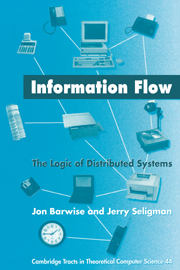21 - Quantum Logic
Published online by Cambridge University Press: 05 November 2011
Summary
Quantum theory is well known for having a nonclassical and somewhat peculiar logic. One approach to trying to make this logic comprehensible is by means of what is called a “manual of experiments.” This is the approach taken, for example, in the book An Introduction to Hilbert Space and Quantum Logic (Cohen, 1989), which we use as our main reference. A manual is thought of as describing a variety of different tests of a system, but where the making of one test may, for some reason, preclude the making of some other test of the same system at the same time. Still, it can happen that from performing one kind of experiment we may get information about what the outcome would have been had we performed another kind of experiment.
Example 21.1. Here is an example taken from 17). Imagine a firefly trapped inside a box, and two kinds of experiments, front and side, one can perform when observing this box at a given instant. In a front experiment one looks in the box from the front, whereas in side one looks from the right-hand side. In front there are three possible outcomes: one may see the firefly light lit up on the right (r), lit up on the left (l), or not lit up at all (n). Similarly, in side there are three possible outcomes: one may see the firefly light at the front (f), at the back (b), or not at all (n).
- Type
- Chapter
- Information
- Information FlowThe Logic of Distributed Systems, pp. 243 - 255Publisher: Cambridge University PressPrint publication year: 1997



